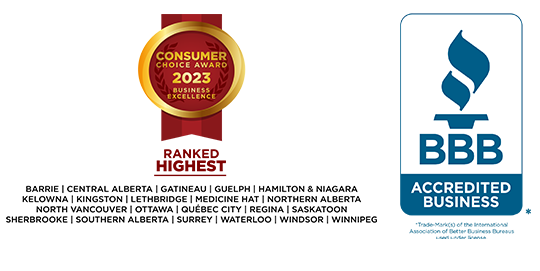Children need more financial literacy training in schools, here’s why
“Why do I have to go to school? I’ll never actually use any of the stuff I’m supposed to learn.”
It’s a question every parent hears in some form or another, probably several times each year. The sad thing is, the kids are probably right — at least to a certain extent. Aside from some extremely specific situations, most people will never again need to dissect a frog, analyze Shakespeare or recite the start and end dates of every war in European history.
What every person does need to know is how to manage their money properly. The sooner children learn this skill and get in the habit of viewing their finances with a skillful eye, the sooner they’ll develop a necessary lifelong habit — and the less likely they’ll be to fall victim to several common, albeit avoidable errors. That’s why financial literacy belongs in our classrooms.

Learning doesn’t just happen at school. Teaching children about money and how it works starts at home. The sooner parents can start teaching children and teens about money, the fewer mistakes they will have to learn the hard way — and the more years they’ll have to build on and apply that knowledge.
Certainly, it would help if the education system placed a greater emphasis on financial literacy. But until that happens, here are a few areas to get started at home:
What is a budget?
A budget is a spending plan. It sets out how much money you earn, spend, and save each month.
Children need to understand that creating and sticking to a budget doesn’t mean they’re setting limits on living. In fact, just the opposite — a budget will help them live within their means, avoid the stress of money troubles, and make better choices with their money. Unfortunately, this is a lesson many adults have yet to learn.
Show your children how developing and following a budget can help them achieve their financial goals. Given its importance in creating opportunities and navigating financial challenges through all stages of their life, this is also a good time to emphasize the value of saving — both for retirement and any unexpected costs which will inevitably arise throughout their lives.
The 50/30/20 rule is a simple technique and a great introduction to budgeting at any age:
- 50 — Roughly half of all income should go toward essential living expenses like housing, utilities, groceries, etc.
- 30 — A third (give or take) of all income should go to discretionary expenses like dining at restaurants, going to the movies, shopping, etc.
- 20 — The remaining 20 percent of income is for savings. This includes saving for financial emergencies, saving for retirement, and saving for large purchases (e.g., vacations, car, mortgage down payment) they otherwise can’t afford.
The Financial Consumer Agency of Canada (FCAC) has some great tools to help you get started.
What is credit?
Credit is a promise to pay. More specifically, credit is a payment arrangement between a consumer (your child) and a financial institution (their lender) which allows an individual to borrow money that is repayable at a later date.
Credit almost always has a borrowing cost attached to it (discussed in depth below) which means the amount the consumer must repay is greater than the amount they borrowed.
There are also two main categories of credit:
- Unsecured credit — A lender advances funds to a consumer which the consumer agrees to repay according to the terms of the loan agreement. If the consumer fails to repay the debt, the lender may use various tactics to recover the debt such as collections agents, lawsuits, etc. However, the lender does not have any automatic claims to the consumer’s property.
- Secured credit — In exchange for the lender advancing the funds, the consumer agrees to attach certain items as collateral (e.g., house, car, etc.). If the consumer fails to repay the debt, the lender may seize and sell the collateral to recover all or a portion of their losses. Common terms in secured credit include foreclosure (generally refers to a home), and repossession (often in the context of an automobile).
Typically, unsecured credit charges a higher interest rate because the lender is taking on more risk and potentially a higher recovery cost (e.g., legal fees, debt collectors, etc.) if the borrower doesn’t pay. Secured credit usually charges a lower interest rate and is therefore cheaper for borrowers, but borrowers also have much more to lose if they fall behind on payments.
There are also several different types of credit:
- Installment loans (e.g., car loans) — A lender advances a fixed amount of funds (e.g., $2,000) to the borrower. The borrower agrees to repay these funds, typically in monthly installments, until the debt (plus interest) is fully repaid.
- Revolving credit (e.g., lines of credit) — A lender provides the borrower access to funds up to a certain amount (e.g., $15,000). The borrower can withdraw funds and against this credit limit on an ongoing basis, provided they make their monthly payments, which are often just the interest cost.
- Open credit (e.g., credit cards) — Similar to revolving credit. However, in addition to the monthly interest payment, there is often a monthly installment required. This so-called minimum payment is usually two to three percent of the outstanding balance on the credit account.
What is the cost of borrowing?
Lending money is an inherently risky enterprise. There’s always the possibility a borrower won’t be able to repay their debts, in which case the lender will lose money.
To offset that risk, almost all lenders (aside from perhaps family and a few close friends) charge interest — in essence a monthly percentage of the outstanding debt. The amount a consumer pays in interest for the privilege of borrowing money over and above the original debt (i.e., principal) is known as the cost of borrowing.
The amount of interest a lender will charge is determined by several factors:
- The prime rate — This is a value set by the Bank of Canada (BOC) and the starting point for all lenders to set their interest rates. The BOC is a Crown corporation which, among other things, lends money to various financial institutions.
- The type of credit (e.g., secured vs. unsecured; installment, revolving, or open, ) — Some types of credit have a higher risk of not being repaid than others. The riskier the type of credit (e.g., credit card), the higher the borrowing cost.
- The amount being borrowed (e., principal) — Depending on the type of debt, the interest rate may increase or decrease as the principal rises.
A high mortgage principal, for example, may cause the interest rate to go down because the loan is secured and the lender stands to make a lot of money. A high personal loan, on the other hand, may cause the interest rate to go up because the loan is unsecured and the lender is taking on a lot of risk.
- The term — This is the length of time it will takes the consumer to repay the As above, this could cause the interest rate to be higher or lower depending on the risk to the lender.
- The borrower’s creditworthiness — This considers several factors including the borrower’s income, payment history (have they made all their payments on time and in full), how much debt the borrower currently has outstanding, etc. This information is all represented in the borrower’s credit report and score (more below).
What is a credit rating?
A credit report is a comprehensive overview of a consumer’s borrowing history. It is created when a consumer borrows money for the first time and is continually updated throughout their lifetime.
Lenders provide information about a consumer’s credit use to the credit reporting agencies, including:
- All the borrower’s credit accounts
- The payment status (i.e., on time, late, missed, etc.) of those accounts, and
- Whether the borrowerhas had any insolvencies (i.e., Bankruptcy, Consumer Proposal, etc.)
The credit rating agencies use this information to calculate a borrower’s credit rating and credit score. These are two ways of assigning an easily understandable value to a borrower’s credit report. Establishing and maintaining a positive credit rating / score is essential for a consumer to borrow money and (as we saw above) keep borrowing costs manageable.
To maintain a good credit rating, a consumer must:
- Honour the repayment terms they agreed to with their lender (i.e., make payments on time)
- Limit both the amount they borrow and the number of credit applications they make
- Review their credit report often and report any errors or suspicious activity to the credit reporting agency immediately.
It’s never too late to learn
Given the lack of financial literacy training in Canada’s education system, it’s possible some of the above topics will be as new to you as they are for your children — and that’s okay. There’s a lot of ground to cover, and a lot of information about debt that lenders are counting on you not knowing.
If you’re struggling with unmanageable debt for any reason, a financial fresh start is within reach. Contact your local MNP Licensed Insolvency Trustee for a Free Confidential Consultation to review your options today. Together we’ll review your financial situation and discuss a range of strategies to help you defeat your debt for good.

